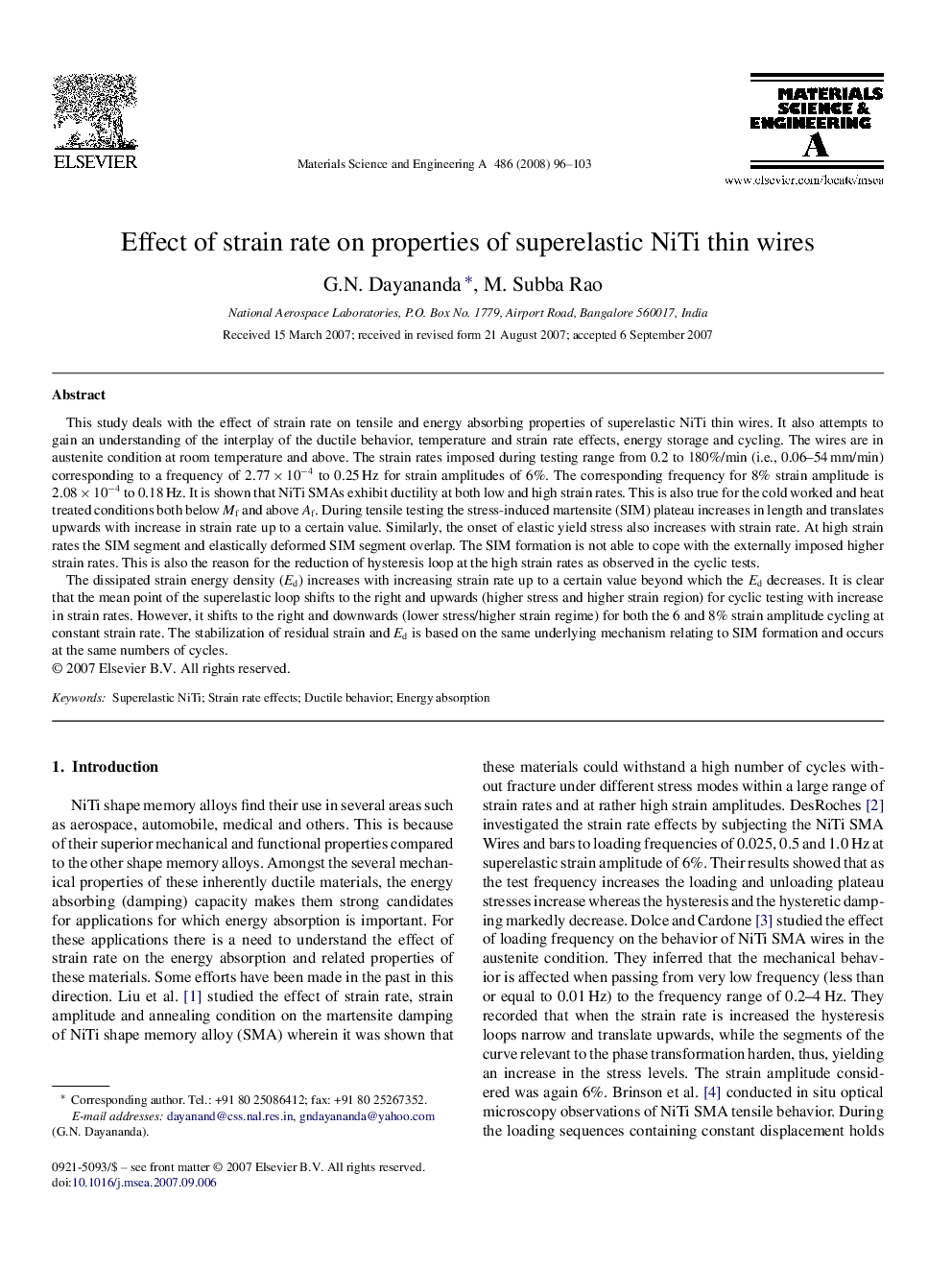| Article ID | Journal | Published Year | Pages | File Type |
|---|---|---|---|---|
| 1582717 | Materials Science and Engineering: A | 2008 | 8 Pages |
This study deals with the effect of strain rate on tensile and energy absorbing properties of superelastic NiTi thin wires. It also attempts to gain an understanding of the interplay of the ductile behavior, temperature and strain rate effects, energy storage and cycling. The wires are in austenite condition at room temperature and above. The strain rates imposed during testing range from 0.2 to 180%/min (i.e., 0.06–54 mm/min) corresponding to a frequency of 2.77 × 10−4 to 0.25 Hz for strain amplitudes of 6%. The corresponding frequency for 8% strain amplitude is 2.08 × 10−4 to 0.18 Hz. It is shown that NiTi SMAs exhibit ductility at both low and high strain rates. This is also true for the cold worked and heat treated conditions both below Mf and above Af. During tensile testing the stress-induced martensite (SIM) plateau increases in length and translates upwards with increase in strain rate up to a certain value. Similarly, the onset of elastic yield stress also increases with strain rate. At high strain rates the SIM segment and elastically deformed SIM segment overlap. The SIM formation is not able to cope with the externally imposed higher strain rates. This is also the reason for the reduction of hysteresis loop at the high strain rates as observed in the cyclic tests.The dissipated strain energy density (Ed) increases with increasing strain rate up to a certain value beyond which the Ed decreases. It is clear that the mean point of the superelastic loop shifts to the right and upwards (higher stress and higher strain region) for cyclic testing with increase in strain rates. However, it shifts to the right and downwards (lower stress/higher strain regime) for both the 6 and 8% strain amplitude cycling at constant strain rate. The stabilization of residual strain and Ed is based on the same underlying mechanism relating to SIM formation and occurs at the same numbers of cycles.
